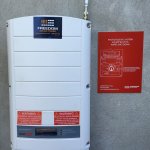jaggedben
Senior Member
- Location
- Northern California
- Occupation
- Solar and Energy Storage Installer
I still can't believe I am being stonewalled so badly from this person, and that he openly said they were just, "making it up as they went along".
...
At some point it might be worth going political. By which I mean reaching out, very politely, to an elected official who represents the constituents of the official's jurisdiction. Any fire department official anywhere ultimately has an obligation to justify their decisions according to code.


